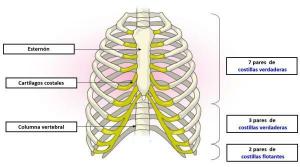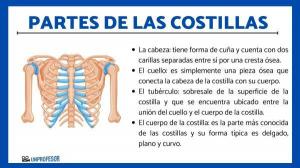Arm muscles: anatomy, names and photos

Image: Total Bodybuilding
The upper extremity of humans (commonly called the arm) is the part of the human body with the greatest variety of movements. Anatomically, our upper limb is divided into two parts: the arm (which goes from the shoulder to the elbow) and the forearm (from the elbow to the wrist). In this lesson from a TEACHER we are going to review the different groups of arm and forearm muscles, that allow us to flex the arm to play a beautiful song on the piano.
The muscles of the arm and forearm can be classified according to several criteria. In our case we are going to do it according to their position but it is also usual to find them differentiated according to whether they are short or long, which allows the muscles to have one or the other movement.
As we have said before, the human upper limbs can be divided into:
- Arm: region that extends from the clavicle to the elbow.
- Forearm: region that extends from the elbow to the wrist.
Within these regions we can differentiate two other parts:
- Anterior aspect of the arm or forearm: is the one that is on the side of the palm of the hand. If you put your arms close to the trunk, with the palms of the hands facing upwards, you will be looking at the front of your arms and forearms.
- Back of the arm or forearm: is the one on the side of the back of the hand. If you arrange your arms in the same arrangement as before, the back of your arms and forearms will be behind you, on the sides of your back.
In the arm we can find two groups of muscles: muscles of the anterior and posterior muscles. The muscles of the anterior face are in charge of the flexion movements while those of the posterior face are contractors (they perform contraction movements). These muscle groups are said to be antagonistic or antagonistic to each other since, when the anterior muscle flexes, the posterior muscle contracts.
Main anterior arm muscles They are:
- Brachial biceps: extends from the clavicle to the elbow (in the intertubercular groove of the humerus). Its main functions are the rotation of the forearm and the flexion of the forearm over the elbow. This muscle is very bulky and when found it is easily observable. As its name suggests, it consists of two parts: the short head of the biceps and the long head of the biceps.
- Brachial: it lies deeper than the biceps brachii and is smaller than the biceps brachii. It has a wide and flattened shape. This muscle is the main flexor of the forearm on the arm.
- Coracobrachial. This muscle is thick and prismatic and runs from the scapula to the biceps within the short portion of the biceps brachii. This muscle is more specialized in rapid movements than in generating force (function performed by the biceps, hence this is more bulky) and its main function is to raise the arm by keeping the shoulder low, balancing the movement of the arm and restoring the position anatomical.
The muscles of the arm of the posterior face
As for the muscles of the back of the arm, we find two main muscles:
- Triceps brachii. It occupies most of the posterior region of the arm. It is formed by three portions or heads: long portion and vast internal and external. Its function is the opposite (antagonistic) to that of the biceps, that is, it is responsible for the extension of the forearm over the elbow.
- Anconeus muscle. It is a small triangular-shaped muscle that contacts the triceps and elbow at its proximal extremity and cooperates with the triceps brachii during the extension of the forearm over the elbow.

Image: What's your name?
The muscles of the forearm can be classified into three large groups:
- Finger flexors: located on the anterior aspect of the forearm
- Finger Extenders: located on the back of the forearm
- Supinators or rotators outer forearm: located on the radial border (towards the thumb) of the arm
Muscles of the anterior part of the forearm
The muscles of the front of the forearm They are: pronator teres muscle, pronator quadratus muscle, flexor carpi radialis muscle, palmar longus muscle, flexor muscle ulnar carpus, superficial flexor muscle of the fingers, deep flexor muscle of the fingers, and flexor longus muscle of the thumb. The main ones are:
- Deep flexor muscle of the fingers. Together with the superficial common flexor of the fingers of the hand, it allows flexing the fingers (except the thumb). This muscle is associated with a long tendon that runs down the forearm and crosses the carpal tunnel to insert on the palmar side of the phalanges of the fingers.
- Superficial flexor muscle of the fingers. Together with the previous one, it allows flexing the fingers, specifically the flexion of the middle phalanx on the proximal phalanx and the hand on the forearm.
Muscles of the back of the forearm
The muscles of the back of the forearm They are: extensor digitorum muscle, extensor carpi ulnaris muscle or posterior ulnar muscle, abductor pollicis longus muscle, Extensor pollicis brevis muscle, extensor pollicis longus muscle, extensor index finger muscle, and palmar brevis muscle or palmar muscle cutaneous. The main muscle in this area is:
- Extensor finger muscle. It runs through the entire forearm, from the elbow to the dorsal part of the wrist, where it is associated with four tendons, which pass through these to fingers two, three, four and five of the hand (all except the thumb). This muscle is responsible for the extension of the wrist and the proximal phalanx of the fingers, although it also has a slight participation in the extension of the arm.
Lateral forearm muscles
Finally there are the lateral forearm muscles. These are: short supinator muscle, long radial or first radial, short radial or radial second and long supinator muscle. The most important muscle in this region is:
- Long supinator muscle. It is located on the upper outer part of the forearm near the elbow and helps to rotate the forearm both externally and internally. Depending on the disposition of the elbow, it can perform different movements so it gives a great variety of movements to the forearm.

Image: Slideshare
If you want to read more articles similar to Arm muscles: anatomy, names and photos, we recommend that you enter our category of biology.



